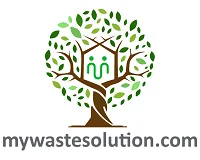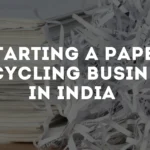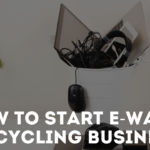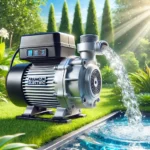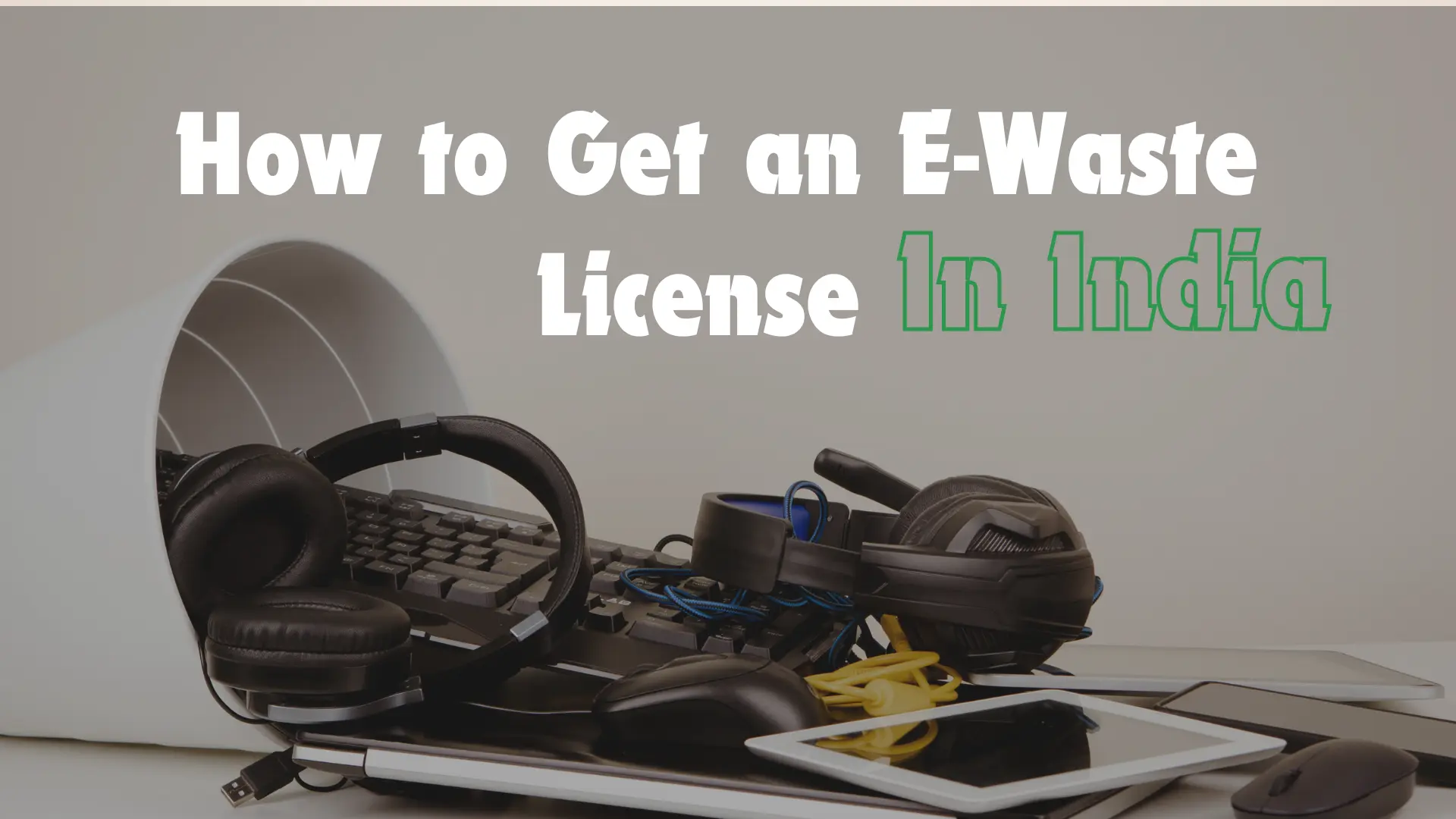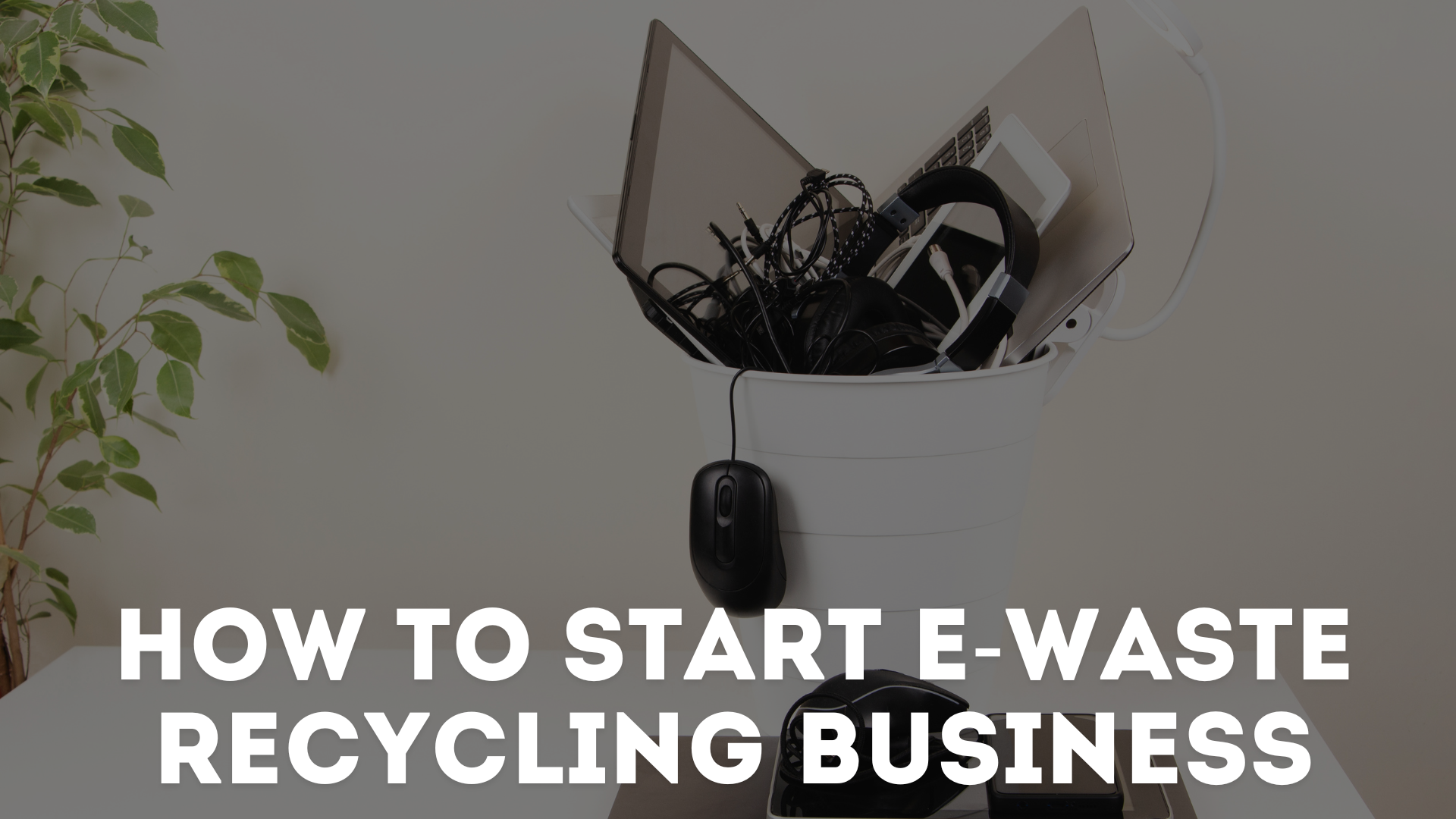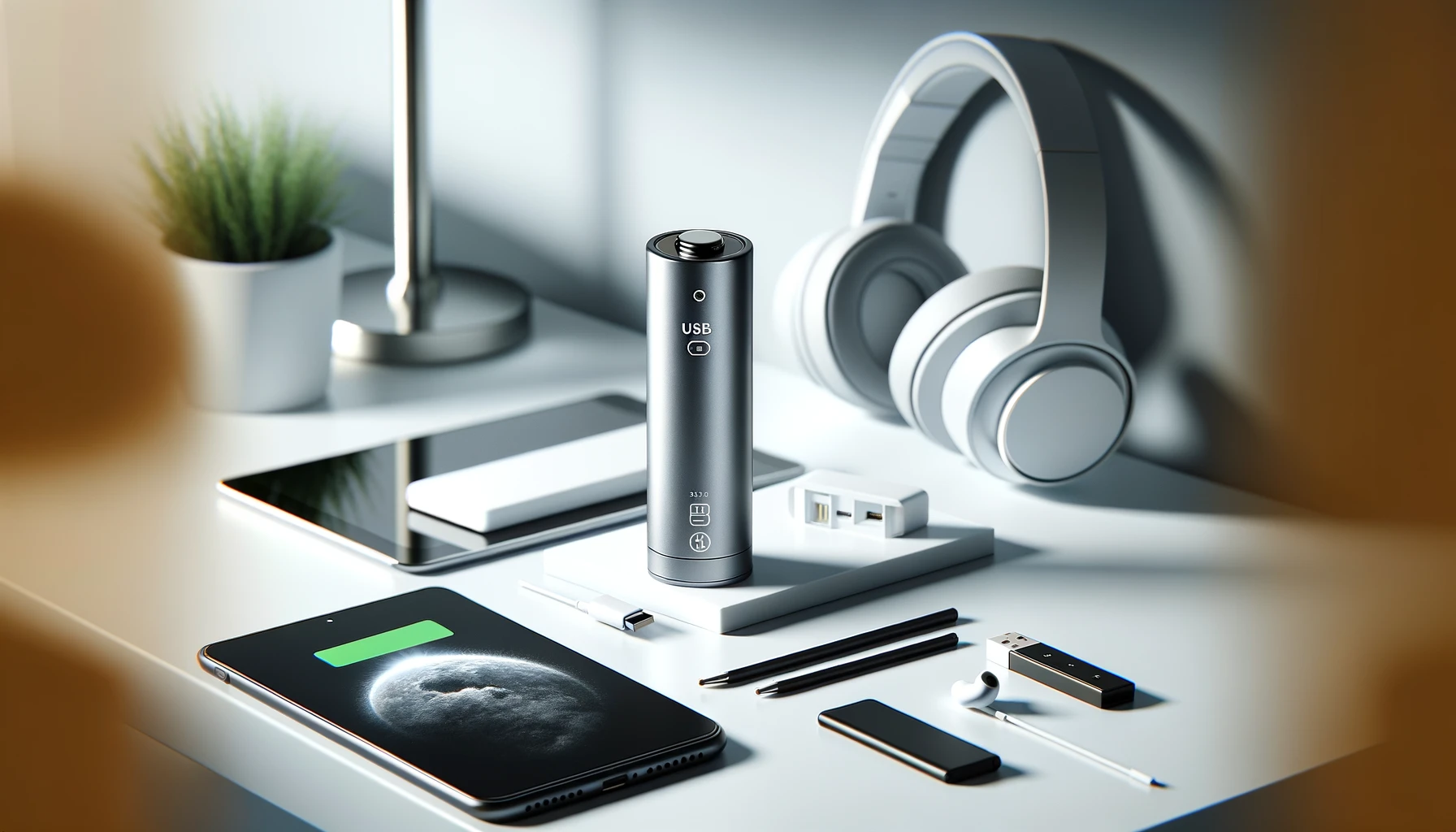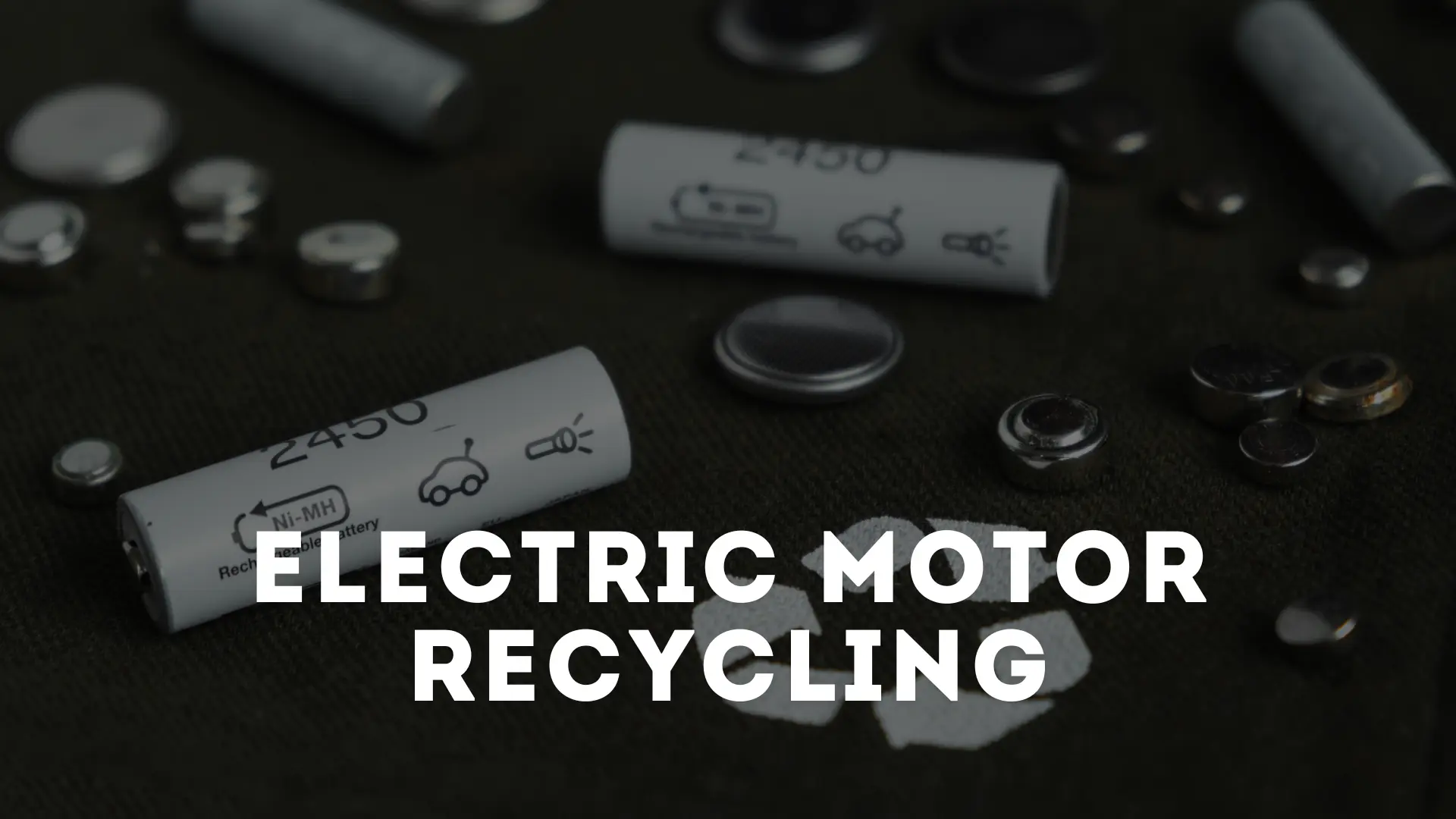We all know there are some procedures we have to follow to dispose of e-waste. But we don’t know exactly what are they ? So, in this article we are going to see how to get an e-waste licence in India? Learn more about the e waste management rules in india, what are requirements for e-waste licence in India and many more.
Before we get started with how to get an e-waste licence in India? We should understand why there is a need for an e-waste recycling licence in india? And to know about it let’s first overview what e waste in india means. Electronic waste, or e waste in common jargon these days! E waste is increasingly becoming a cause of concern in developing countries like India. It’s very obvious due to environmental and human health hazards associated with it. Ironically, constituents of e waste can be valuable, at the same time being toxic. The practices involved in managing and treating the electronic waste in India have limitations that need to be identified and resolved. The waste management can be properly executed if there are proper collection and disposing methods adopted. This can be possible only if there is proper awareness related to the ill-effects of e waste among society. Connect with the best e-waste consultants here.
E-waste management rules in India
E- waste stands for electronic waste. Basically it’s a term used for products or devices that have become useless, stop-working, discarded and have necessarily reached the end of their useful life. E- waste management rules in India not only inform us about rules and regulations related to electronic waste but also guide us to the e waste registration process and e waste licence requirements in India. E-waste is managed in industries by adopting four steps which are:-
- Inventory management,
- Production-process management,
- Volume reduction and recovery and
- Re-use.
E waste management rules in India talks about how the amount of e waste can be decreased by following ways:-
- Firstly, by creating review over purchasing of material and control processes and secondly, by an inventory tracking method.
- In the production-process management step, waste can be minimised by improving operating and maintenance processes, by changing materials used in manufacturing of products and by changing the existing procedure for developing the product.
- In the third step, that is volume reduction, techniques are applied to extract the harmful part of waste from the non-harmful part and thereby the volume of the e-waste is minimised. Minimisation of waste is achieved by segregating the waste at the source.
- Finally, in the recovery and reuse step, waste is recycled and the environment can be saved, as the recycling transfers the harmful substances into other products which are to be disposed of (Sastry and Murthy, 2012).
- The quantity of e-waste can be minimised to a large extent through recycling and reusing the products. Recycling and reusing of the material helps in conserving the energy and also in making the environment free from toxic substances (Joseph, 2007).
Explore E-Waste Solutions
Find top machinery, plants, tools, resources, companies, and consultancy for comprehensive E-Waste licencing needs.
Components of e Waste management
The various tools used for managing e-waste are life cycle assessment (LCA), material flow analysis (MFA), multi-criteria analysis (MCA) and extended producer responsibility (EPR). 330 P.R. Kaushik and S. Heart
- LCA is a tool used for designing eco-friendly electronic equipment and for minimising the problems created by e-waste. LCA is used for making decisions on managing computer-related waste in India.
- MFA is a tool used to manage the flow of e-waste in the environment and is used to analyse gold and copper flowing from recycling personal computers in India.
- MCA is a tool used to find a suitable location for setting up recycling plants for e-waste.
- EPR(extended producer responsibility) is a policy for ensuring responsibility of electronic components to the manufacturers even after their end of life (Kiddee et al., 2013).
E-Waste management rules 2016
The E-Waste (Management) Rules, 2016 mandate CPCB to prepare guidelines on implementation of E-Waste Rules, which includes specific guidelines for extended producer responsibility, channelisation, collection centres, storage, transportation, environmentally sound dismantling and recycling, refurbishment, and random sampling of(EEE) Electrical and electronic equipment for testing of RoHS(Restriction of hazardous substances in electrical and electronic equipment) parameters.
EPR Policy in India
Extended producers’ Responsibilities is a globally recognized policy used as an effective tool to put the onus on the producers for efficient end of life waste management of the electronic and electrical equipment. OCED (organization for economic cooperation and development) defines it as an environmental policy approach in which a producer’s responsibility for a product is extended to the post-consumer stage of a product’s life cycle.
The concept of EPR responsibility is based on three foundation principles that are “Pollution prevention approach”, “life cycle thinking”, and “Polluter pay principle”. E-Waste (management and handling) Rules, 2016 adopted Extended Producers Responsibility for the first time in India, Stipulating that the producers are responsible for setting up collection centres for e-waste and financing and organizing a system for environmentally sound management of e-waste. Similar provisions were included in Plastic Waste Management Rules, 2016, laying down that producers of waste are mandated to ensure that generation of plastic waste is minimized, and plastic waste is not littered and stored at the source, which is then handed over to local bodies or authorized agencies.
As we are aware very well that CPCB has in their notice emphasised all producer’s of Electrical and Electronic Equipment under the E-Waste rules of 2016 to get EPR certification. So Every manufacturer, producer, consumer, bulk consumer, collection centres, dealers, e-retailer, refurbisher, dismantler and recycler involved in manufacture, sale, transfer, purchase, collection, storage and processing of e-waste or electrical and electronic equipment listed come under these E-waste rules.
First of all Form-1 needs to be filled by the concerned producer. Then within 120 days after undergoing thorough inspection CPCB will grant the respective authorisation. This certificate once acquired shall remain valid for five years from the date of announcement. Before 120 days of expiry one can file for renewal of their certificate with CPCB, for which a compliance report must be obtained from the concerned State Pollution Control Board. Every year producers must submit their annual records on or before the 30th day of June of every year.
Struggling with e-waste licencing issues? Connect with top consultants specialising in e-waste licencing.
Connect NowDocuments Required for EPR License & in India
The following are the documents required to acquire the extended producer Responsibility certificate:
- Address Proof
- Legal papers of Manufacturer/Exporter
- Certificate of Incorporation
- IE Code
- Directorate of Industries
- Certificate by Municipal corporations or local bodies, if applicable
- Contact details
- Copy of PAN card
- Details and documents of the authorised person signing the papers (Aadhar Card)
- Details of the products, including model numbers and import history
- Copy of BIS License (if applicable)
- Details of RoHS compliance (Reduction of Hazardous wastes)
- Details of the recycler
- Estimation of E-Waste Management
- The estimated budget for the Electronic Producer Responsibility
- Details of the awareness program to make folks aware of the E-Waste management
- EPR Plan
- Copy of Agreements with the following:
- Collection Center
- Dealers
- Recyclers
- Storage
- Disposal
- Website content detailing the commitment toward E-waste management
E-waste Management Practices in India
India is the “Third largest electronic waste producer in the world”; approximately 2 million tons of e-waste are generated annually and an undisclosed amount of e-waste is imported from other countries around the world. Here are some e-waste Management Practices in India.
- Land filling :- This process includes excavation of trenches, burying e-waste in pits and covering such pits by layers of earth.
- Incineration :- It is the combustion process in which e-waste is burned in an incinerator unit around 900 degrees to 10,000 degree Celsius. Incineration helps in converting hazardous substances into lesser hazardous ones.
- Recycling :- A process of dismantling as in the discarding of numerous parts of electronic waste containing hazardous substances such as Printed circuit boards,Plastics,discarding or CRT,segregation of non-ferrous ,mobile phones,hard drive , wires etc can be recycled.
The various initiatives taken by the Government of India for managing e-waste are given below:
- E-Parisaraa – this is the first scientific plant established for recycling e-waste to minimise the e-waste pollutants and also recover metals.
- Earth Sense Recycling Private Limited – this company was established for managing bio-medical waste in 2000 and now it handles every kind of waste management, including e-waste.
- Trishyiraya Recycling India Pvt. Ltd. – This company has been certified by the Government of India and it recycles the e-waste.
- Plug-into E-cycling – here, e-cycling refers to recycling and recovering. This helps to reduce emissions of greenhouse gases in the atmosphere.
- Installations of e-Bins in Bangalore City – e-bins are installed to create awareness among the dwellers regarding e-waste.
Find and connect with leading companies specialising in e-waste licencing solutions.
Get Connected Today
E-waste licence in india
Government of India, any entity which is engaged in handling,collection,storage,and recycling of e waste,is required to get an electronic waste licence from the state pollution control board as per the rules and regulations of the Ministry of Environment Forests and climate change(MoEFCC), Government of India.
In 2020-2021, India processed 3.4 lakh tonnes of e-waste. According to CPCB, the generation of plastic waste per year is increasing by 3%, and the generation of e-waste is even higher, with waste produced totaling 7.1 lakh tonnes in 2018-19 and 10.14 lakh tonnes in 2019-20. Every year, there is a 31% increase.
First we will apply for concern to establish from the pollution control board. Then we will apply for concern to operate(CTO)- NO OBJECTION CERTIFICATE Y. It gives the owner permission to operate his or her e-waste unit in a particular state. This licence is valid for a certain number of years after which it has to be renewed. To know more about it, do get in touch with our consultancy today!
To obtain e-waste license easily and in a hassle-free manner, connect with our legal regulation and compliance consultants for e-waste licence here!
How to get an e-waste licence in India?
- Step- 1:
- The applicant shall open the Online Single Window Portal using the address of the central pollution control Board.
- Register in an Online portal using their personal Details and Contact Details.
- A password is generated and sent thru SMS/Email. Using the User id and password to log into the online web portal.
- Step – 2: After logging into the web portal, the Applicant shall fill the Common Application Form and create a Unit.
- Step – 3: Select Apply for Certificate/NOC/Permission, choose unit, select Department “UP Pollution Control Board” and service “Authorization and Registration under E-Waste” then click on proceed. The applicant will go ahead and submit the application form.
- Step – 4: Now, go to “Pay Your consolidated Fee” and then pay the required fee.
- Step – 5: After successful fee payment, application shall reflect to concerned regional office (RO)
- Step – 6: Application shall be processed by RO. Necessary inspection is done by the department. In case of any query/objection, Dept shall raise a query within 7 days of submitting application and applicant has to reply on query through Nivesh Mitra portal.
- Step – 7: RO process the application and finally approve/reject consent
- Step – 8: Applicant Downloads the Final certificate through Nivesh Mitra portal
- Fee & Mode of Payment:- Variable Fee, Online mode ( Please Note – Fee Calculator is given at UPPCB Portal) Online Consent Management & Monitoring System (upocmms.nic.in).
The above steps is the registration process for e-licence in India and e waste certificate format too.
Who is eligible to obtain an E-waste Licence?
- Any Individual
- Registered society
- Organisation
- A designated agency
- A company
- An association
So as per the rules and regulations of the MoEFCC, Government of India, any entity which is engaged in handling, collection, storage, and recycling of e-waste, is required to get an electronic waste licence from the State Pollution Control Board (SPCB).
Connect with the top waste management consultants for efficient management of waste.

Explore the Best E-waste Machinery and Plants for your Industrial Needs.
Connect TodayDocuments required for e waste Licence/registration.
- Aadhar Card of the authorised person.
- Pan Card of the authorised person.
- A Certificate.
- MSME Certificate-Ministry of Micro, Small & Medium Enterprises Certificate (if applicable)
- TIN- Tax Identification Number OR GST Certificate.
- Layout Plan.
- Project Report.
- Electricity Bill.
Why is an e waste licence necessary?
Now it will be very easy for us to understand that why is an e-waste licence necessary? Recycling E-waste is a great way to reduce pollution and help cover the terrain. There are numerous benefits to having a recycling licence, including reducing the quantum of waste produced, saving trees and energy, and adding jobs in the recycling assistance. Licences also help keep recyclers responsible for their performance. They give guidelines for sorting electronics into different orders and for proper processing and disposing of each type of waste. E waste recycling benefits the terrain in a variety of ways. By minimising the quantum of waste produced, recycling helps reduce pollution from tips.
Sorting and burning electronic equipment releases poisons similar to lead, mercury, arsenic, and cadmium into the air. Recycling also reduces wood consumption demanded for new products, since utmost electronic products are made out of plastic or essence.
Challenges faced by E-waste management strategies in India.
There are various challenges we face during e-waste management .So to deal with that we apply some strategies. Some challenges are as follows-
- Poor infrastructure to recycle e-waste; India has very few recognized and government-approved recycling centres to dismantle and repurpose electronic waste.
- A Serious lack of awareness; Most of the people don’t have the knowledge of the consequences of reckless e-waste disposal.
- Mismanagement products; lack of knowledge regarding cost-effective and efficient e waste management techniques, as well as how to maximise the utility of end-of-life products.
- Unsustainable and ecologically degrading practices.
- Adequate Regulatory Design and enforcement.
Struggling with e-waste buying and selling issues? Connect with top e-waste buyers and sellers here.
Buyer Listings Seller ListingsHow to improve e waste Management in India ?
So here are 5 key points for the improvement of e- waste management in India.
- Providing market information about E-waste Prices :- As there is lack of knowledge regarding e-waste a consolidated price list must be updated on a weekly basis as it would be a powerful market signal for customers who sell the e-waste to local vendors.
- Incentivizing Formal E-waste Recycling :- The Indian Government has introduced a point-based reward system of E-waste Recycling Credits (ERCs) for formal organizations to incentivize them to channel their e-waste through government-approved recycling centres. The E-Waste Rules already classify and code e-waste like laptops, computers, and mobile phones. These categories have to be correlated at different ERC reward levels. Depending on the type of e-waste supplied, organizations must earn the requisite ERCs that can be used to offset energy utility bills. Such an initiative will also provide a strong incentive for informal sector e-waste businesses to formalize the operations and establish supply chain links with approved recycling centers.
- Training and Upskilling Informal Sector Players :- The majority of an informal e-waste recycling workforce needs upskilling, particularly for handling and dismantling hazardous materials. It must ensure the work’s environmental and occupational health and safety and link supply to formal sector processors. It is pursued by the Indian government’s National Skill Development Mission.
- Developing Innovative Methods & Technologies for Processing New Forms of e waste :- The composition of e-waste is changing rapidly due to the new electronic devices to enter the market. It requires significant investment in research & development for innovative recycling methods and technologies for future-proofing India’s e-waste policies and management. For example, smartphone usage has expanded dramatically in India over the past five years, but any e-waste recycling rules do not yet cover the lithium-ion batteries that power the devices.
- Deploying Readily Available and Mature Recycling Technologies:-There is an urgent need for deploying mature recycling technologies alongside existing manual techniques to improve the recycling efficiency of the large volumes of e-waste management in India.The Indian government must promote joint ventures between international and domestic companies for setting up large industrial e-waste recovery plants. These ventures can be funded by a combination of private and public investment.
FAQs
Ques 1) Do you need a licence to dispose of e waste?
Answer- As per the rules and regulations of the Ministry of Environment, Forests and Climate Change (MoEFCC), Government of India, any entity which is engaged in handling, collection, storage, and recycling of e-waste, is required to get an electronic waste licence from the State Pollution Control Board (SPCB).
Ques 2) How to get an e waste licence in india?
Answer- Apply for Authorization in Form- IV in DPCC under E Waste (Management) Rules, 2016.
Ques 3) What are the e-waste licence requirements?
Answer-
- Aadhar Card of the authorized person.
- Pan Card of the authorized person.
- A Certificate.
- MSME Certificate (if applicable)
- TIN/ GST Certificate.
- Layout Plan.
- Project Report.
- Electricity Bill.
- Where can I get e-waste licence from
- What are e-waste management rules
These are some documents required for an e-waste licence in India.
Ques 4) What are the rules and regulations for e-waste in India?
Answer- The maximum time allowed for storage of e waste is 180 days. The State Pollution Control Board (SPCB) has the power to extend the time up to 365 days. The extension will be made in case the e-waste needs to be processed before it is forwarded to the dismantler or recycler.
Ques 5) What are the six categories of e-waste?
Answer- Fridges, freezers and other cooling equipment ,Computers and telecommunications equipment,Consumer electronic devices and solar panels,TVs, monitors and screens,LED bulbs,Vending machines.
Ques 6) What is an EPR licence?
Answer- EPR stands for Extended Producer’s Responsibility. EPR Certificate is mandatory for Indian Manufacturer / Importer of product for E-waste management. EPR Authorization is given by the Central Pollution Control Board (CPCB) under MoEFCC, Government of India.
Ques 7) Who needs an EPR certificate?
Answer- EPR Certificate is mandatory for Indian Manufacturer / Importer of products for E-waste management. EPR Authorization is given by the Central Pollution Control Board (CPCB) under MoEFCC, Government of India.
Ques 8) Which country is the biggest producer of e-waste?
Answer- China’s domestic contribution of e-waste is weighty.
Also Read: ISO 9001:2015 Certification: The Complete Guide
